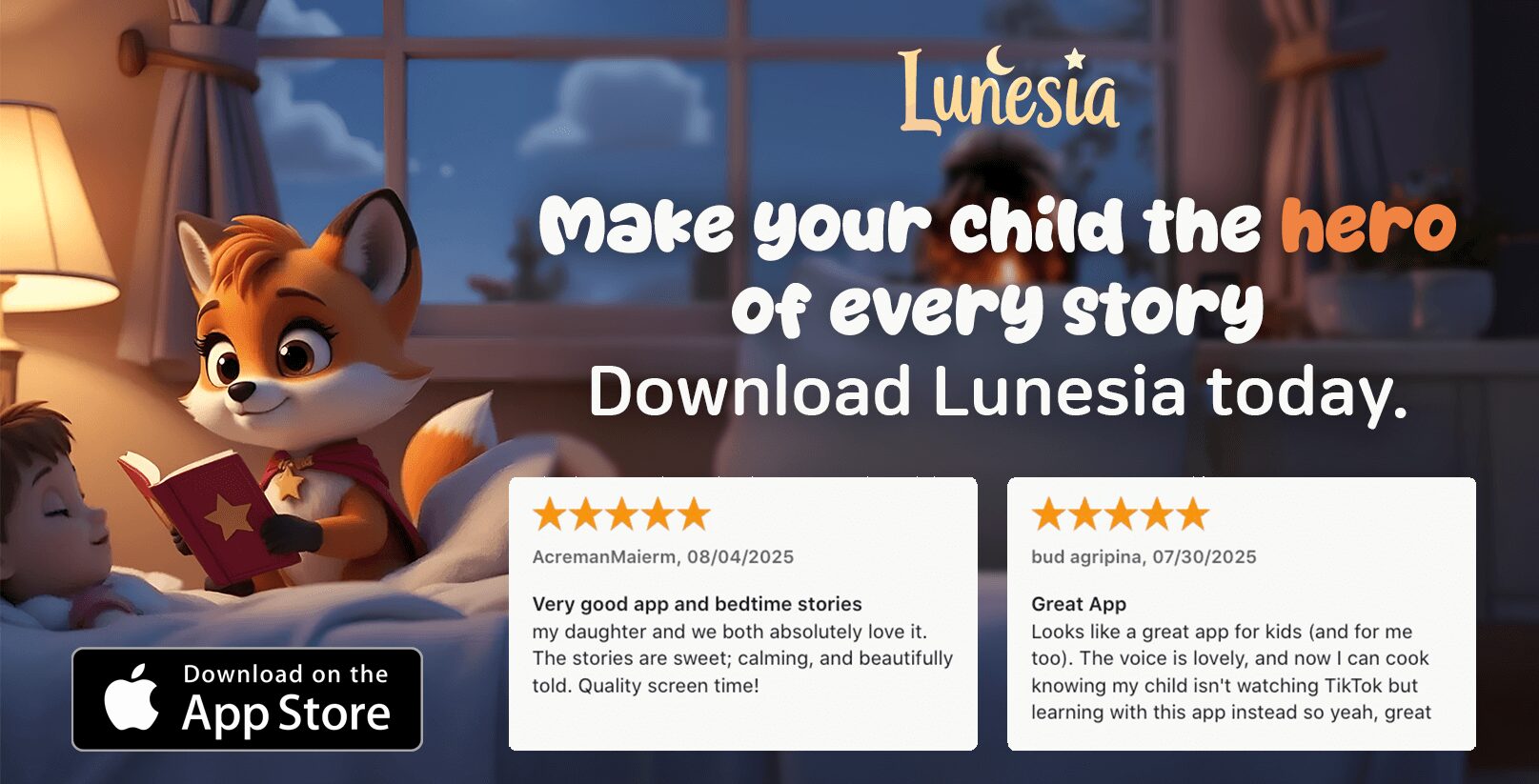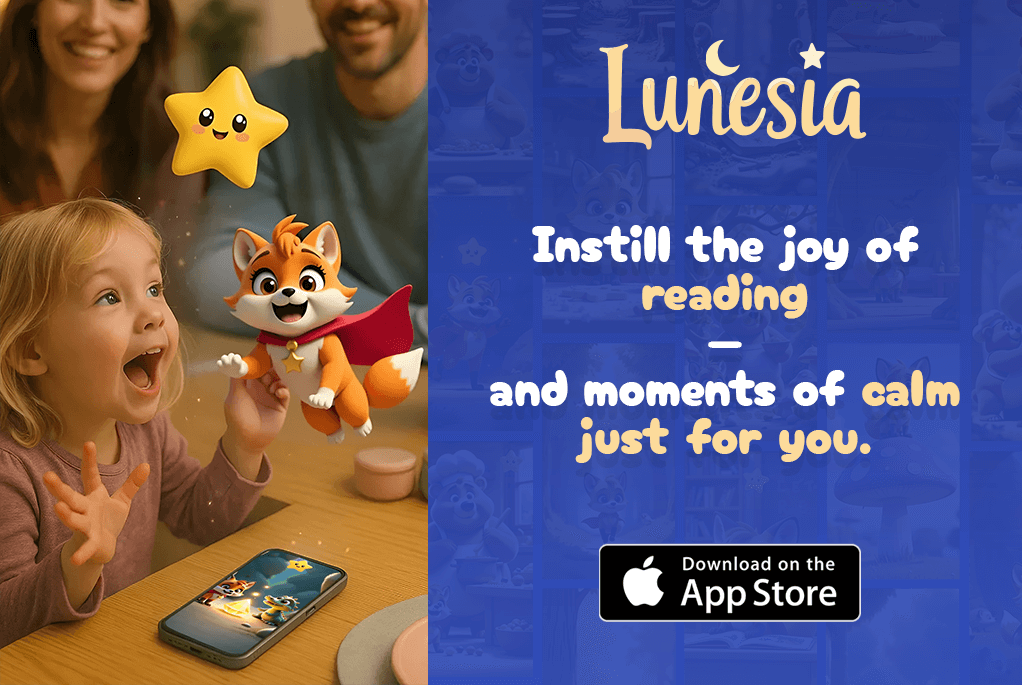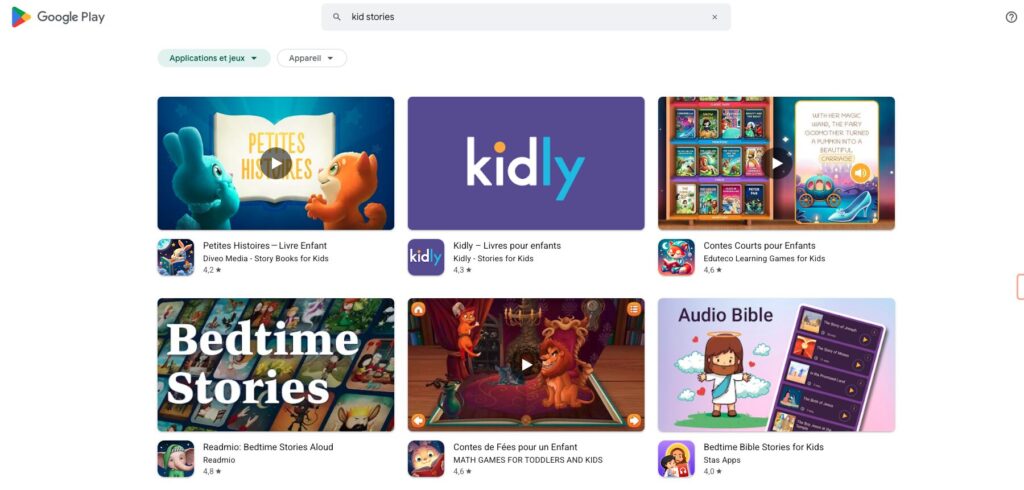There’s something magical about a bedtime story. It’s not just about the words on the page—it’s about the quiet moments, the shared laughter, and the gentle transition to sleep. I remember my own childhood, tucked under the covers, eagerly waiting for my mom to open a book. Those stories weren’t just tales; they were a bridge to dreams.
Choosing the right story for your kid can make all the difference. A good bedtime story isn’t just entertaining—it’s calming, engaging, and age-appropriate. Whether it’s a narrated tale on YouTube or a beautifully illustrated book, the right choice can foster a love for reading and create a comforting bedtime atmosphere.
So, how do you pick the perfect one? It’s about understanding what resonates with your little one. A well-chosen story can turn bedtime into a cherished routine, filled with warmth and connection. Let’s explore how to make that happen.
The Importance of Bedtime Stories
Reading before bed isn’t just about winding down; it’s about creating lasting memories. A bedtime story can be a powerful tool for fostering imagination, improving sleep, and strengthening family bonds. It’s a moment to connect, share, and grow together.
Benefits for Sleep and Imagination
A well-chosen book can work wonders for your child’s sleep routine. Studies show that reading aloud before bed helps reduce nighttime fears and creates a calming atmosphere. The rhythmic flow of words can soothe even the most restless minds, making it easier to drift off.
Beyond sleep, stories spark creativity. They transport young listeners to magical worlds, encouraging them to dream big. Research indicates that regular storytelling enhances cognitive development and builds essential language skills. It’s a simple yet profound way to nurture their growing minds.
Enhancing Family Bonding
Bedtime stories are more than just tales—they’re moments of connection. Reading together fosters a sense of security and love. It’s a time to share laughter, discuss feelings, and create traditions that last a lifetime.
Many families find that this ritual strengthens their bond. As one parent shared,
“Reading to my child every night has become our special time. It’s when we truly connect.”
Whether it’s a classic fairy tale or a modern adventure, the right story can bring you closer.
| Benefit | Impact |
|---|---|
| Improved Sleep | Calms the mind and reduces anxiety |
| Enhanced Imagination | Encourages creative thinking |
| Stronger Family Bonds | Fosters connection and trust |
Incorporating a bedtime story into your routine is a small change with big rewards. It’s a chance to create a cozy, loving environment that benefits everyone involved. So, grab a book, snuggle up, and let the magic of storytelling work its wonders.
Understanding Age-Appropriate Story Selection
Finding the right bedtime story for your kid can be a game-changer. It’s not just about picking a book—it’s about matching it to their developmental stage. A story that’s too complex might frustrate them, while one that’s too simple could bore them. The key is to find a balance that keeps them engaged and soothed.

Understanding your child’s reading level and emotional needs is crucial. For example, toddlers thrive on colorful visuals and simple plots, while older kids enjoy more complex narratives. Let’s break it down by age group to help you make the best choice.
Stories for Ages 3-5
For toddlers and preschoolers, simplicity is key. Look for books with bright, engaging illustrations and repetitive phrases. Stories like “The Very Hungry Caterpillar” or “Goodnight Moon” are perfect. They’re short, rhythmic, and easy to follow, making them ideal for calming young minds before bed.
Interactive books, like lift-the-flap or touch-and-feel options, are also great. They keep little hands busy while introducing basic concepts like colors, shapes, and animals. These stories not only entertain but also help build early language skills.
Stories for Ages 5-8
As kids grow, their stories should too. At this age, they’re ready for more detailed plots and characters. Books like “Where the Wild Things Are” or “Sam and Dave Dig a Hole” are excellent choices. They combine imaginative storytelling with relatable themes, sparking creativity and curiosity.
This is also a great time to introduce chapter books with simple narratives. Stories like “Amelia Bedelia” or “Unicorn Academy” are engaging yet not too lengthy. They help build reading confidence while keeping bedtime routines enjoyable.
Stories for Ages 8-10 and Beyond
For older kids, bedtime stories can be more adventurous and thought-provoking. Books like “Harry Potter” or “Diary of a Wimpy Kid” are perfect. They offer longer, more complex narratives that encourage critical thinking and empathy.
At this stage, you can also explore stories with moral lessons or diverse viewpoints. These tales not only entertain but also help your child navigate real-life challenges. Remember, the goal is to create a calming yet enriching bedtime experience.
Choosing the right story for your child’s age ensures a peaceful and meaningful bedtime. It’s a small step that can make a big difference in their development and your nightly routine.
Exploring Different Story Formats
The way a story is told can shape its impact, especially at bedtime. Whether it’s a rhyming tale or a straightforward narrative, the format plays a key role in how it’s received. Understanding these differences can help you choose the best option for your nightly routine.
Rhyming Versus Non-Rhyming Tales
Rhyming stories have a unique charm. Their rhythmic flow creates a soothing effect, making them ideal for calming young minds. Books like “Goodnight Moon” or “Dr. Seuss” classics are perfect examples. The repetitive patterns help listeners relax and drift off to sleep.
Non-rhyming tales, on the other hand, often offer more detailed narratives. They can include complex plots and moral lessons, making them engaging for older listeners. Stories like “Charlotte’s Web” or “The Lion, the Witch, and the Wardrobe” fall into this category. These tales encourage critical thinking and deeper emotional connections.
When deciding between the two, consider your child’s interests and attention span. Rhyming stories are great for younger ones who enjoy repetition and rhythm. Non-rhyming tales work well for older listeners who crave more intricate plots.
| Format | Benefits | Best For |
|---|---|---|
| Rhyming Tales | Calming, rhythmic, easy to follow | Younger listeners |
| Non-Rhyming Tales | Detailed plots, moral lessons, engaging | Older listeners |
Both formats have their place in bedtime routines. Rhyming tales create a soothing atmosphere, while non-rhyming stories offer depth and engagement. By understanding these differences, you can make the best choice for your nightly ritual.
Children’s Stories for Bedtime: Top Picks
Bedtime becomes magical when the right story unfolds. Over the years, I’ve discovered a few gems that make this nightly ritual extra special. These picks are not just entertaining—they’re calming, engaging, and perfect for winding down.
One of my favorites is “The Robot Bedtime Book.” Its rhythmic text and vibrant illustrations create a soothing atmosphere. The story’s playful tone keeps little ones engaged while gently guiding them toward sleep.
Another standout is “Goodnight Moon.” This classic has been a bedtime staple for generations. Its repetitive, calming words and soft illustrations make it ideal for younger listeners. It’s a story that feels like a warm hug.
For those who love adventure, “Where the Wild Things Are” is a must. Its imaginative plot and relatable themes spark curiosity while still being calming. It’s a story that invites dreams of faraway lands.
These stories are more than just tales—they’re tools for creating a peaceful bedtime routine. Whether it’s the rhythmic flow of “The Robot Bedtime Book” or the timeless charm of “Goodnight Moon,” each one offers a unique blend of fun and relaxation.
Explore these top picks and see which one resonates with your family. A great bedtime story can turn an ordinary night into something extraordinary.
Engaging Elements in Storybooks
A great storybook is more than just words—it’s a journey for the senses. The best ones combine vivid illustrations with captivating narratives to create an unforgettable experience. Whether it’s a bedtime ritual or a daytime adventure, these elements make the story come alive for your kid.

Illustrations and Visual Appeal
Illustrations are the heart of any storybook. They capture a child’s attention and help them visualize the characters and settings. Bright, detailed artwork can turn a simple tale into a magical adventure. For example, books like “The Very Hungry Caterpillar” use bold, colorful images to engage young readers.
Visuals also enhance comprehension. A study found that 70% of caregivers say colorful pictures in board books effectively hold a child’s attention. These images make the story more accessible, especially for younger listeners who are still developing their reading skills.
Captivating Narrative and Moral Lessons
A compelling narrative keeps kids hooked from start to finish. Stories with relatable characters, exciting conflicts, and clear resolutions are particularly engaging. For instance, “Charlotte’s Web” combines an emotional plot with valuable lessons about friendship and sacrifice.
Moral lessons add depth to the story. They teach important values like kindness, honesty, and empathy. Research shows that 75% of kids prefer stories with moral dilemmas, as they encourage critical thinking and emotional growth. These lessons make the story not just entertaining but also meaningful.
| Element | Impact |
|---|---|
| Illustrations | Enhance engagement and comprehension |
| Captivating Narrative | Keeps kids interested and emotionally invested |
| Moral Lessons | Teaches values and encourages critical thinking |
When these elements come together, they create a multi-sensory experience that makes bedtime special. A well-crafted storybook can turn a simple routine into a cherished moment of connection and wonder.
Integrating Books and Digital Media
In today’s digital age, bedtime routines are evolving with new storytelling options. While traditional printed books remain a classic choice, digital media offers innovative ways to engage young listeners. Let’s explore how these formats compare and how you can balance them for a calming bedtime experience.
Printed Books Versus Interactive Storytelling
Printed books have a timeless charm. They’re tactile, easy to share, and free from screen glare. For many families, flipping through pages together creates a special bonding moment. Books like “Goodnight Moon” or “The Very Hungry Caterpillar” are perfect for this.
On the other hand, interactive storytelling through digital platforms brings a new level of engagement. Apps and e-books often include animations, sound effects, and interactive elements that captivate young minds. Research shows that these features can enhance comprehension and keep reluctant readers interested.
Utilizing YouTube Channels for Narrated Stories
YouTube has become a popular resource for bedtime stories. Channels like “Storyline Online” feature professional narrators who bring stories to life with expressive voices and visuals. This format is especially helpful for busy parents or those who want to introduce their kid to diverse storytelling styles.
However, it’s important to balance screen time with traditional reading. Experts recommend limiting digital media use to one hour per day for young listeners. Combining both formats can create a well-rounded bedtime routine.
| Format | Benefits | Considerations |
|---|---|---|
| Printed Books | Tactile, screen-free, fosters bonding | Limited interactivity |
| Digital Media | Interactive, engaging, diverse options | Screen time management |
Whether you choose a printed book or a digital story, the goal is to create a calming and enjoyable bedtime experience. By integrating both formats, you can cater to your child’s preferences while fostering a love for storytelling.
Modern Fairytales and Timeless Classics
Modern fairytales are redefining storytelling, blending classic charm with contemporary relevance. These updated tales breathe fresh life into familiar narratives, making them more engaging for today’s kid. By reimagining well-known characters and adding fresh twists, these stories capture the magic of yesterday while addressing the themes of today.
Take “The Three Ninja Pigs” by Corey Rosen Schwartz, for example. This action-packed retelling transforms the classic fable into a martial arts adventure. It’s not just entertaining—it teaches lessons about teamwork and perseverance. Similarly, “Goldy Luck and the Three Pandas” by Natasha Yim introduces Chinese New Year traditions, adding cultural depth to a beloved tale.
Reimagining Classic Characters
Modern fairytales often give classic characters a new identity. In “The Little Red Fort” by Brenda Maier, the protagonist is a resourceful girl who builds her own fort. This twist on “The Little Red Hen” emphasizes determination and creativity. These reimagined characters inspire young listeners to see themselves as heroes of their own stories.
Another standout is “Cinderella With Dogs” by Linda Bailey. This humorous retelling replaces the glass slipper with a wagging tail, making the story relatable and fun. By updating characters, these tales stay relevant while preserving their timeless morals.
Fresh Twists on Traditional Fables
Traditional fables are also getting modern makeovers. “The Teeny-Weeny Unicorn” by Shawn Harris delivers a message about self-acceptance, showing that even the smallest can achieve greatness. Similarly, “Knight Owl” by Christopher Denise features an owl pursuing his dream of becoming a knight, blending humor with inspiration.
These stories seamlessly merge the magic of yesterday’s classics with the energy of today’s storytelling. They’re perfect for bedtime, offering both entertainment and valuable lessons.
| Modern Fairytale | Classic Inspiration | Key Lesson |
|---|---|---|
| The Three Ninja Pigs | The Three Little Pigs | Teamwork and perseverance |
| Goldy Luck and the Three Pandas | Goldilocks and the Three Bears | Cultural awareness |
| The Little Red Fort | The Little Red Hen | Resourcefulness |
These modern fairytales are more than just stories—they’re tools for teaching and connecting. Whether it’s a bedtime story or a daytime adventure, they bring the magic of storytelling to life, day by day.
Practical Tips for Parents Selecting Bedtime Stories
Selecting the perfect bedtime story can transform nightly rituals. It’s not just about the tale itself but how it fits into your evening routine. A well-chosen story can calm your child, ease transitions, and create a sense of security. Let’s explore some practical tips to make bedtime smoother and more enjoyable.
Creating a Calming Nighttime Routine
Consistency is key to a successful bedtime routine. Start by setting a specific time each day for reading. This helps signal to your little one that it’s time to wind down. Choose a cozy spot with soft lighting and minimal distractions. A comfortable chair or a pile of pillows can make the experience even more inviting.
When selecting a story, consider your child’s energy levels. For younger ones, shorter tales with repetitive phrases work best. Older kids might enjoy longer narratives with engaging plots. The goal is to keep them interested without overstimulating them.
Timing and Story Selection
Timing matters when it comes to bedtime reading. Aim for 10-20 minutes, depending on your child’s age and attention span. If they’re particularly restless, opt for a calming story with a soothing rhythm. Books like “Goodnight Moon” or “The Very Hungry Caterpillar” are excellent choices.
Rotate books every two weeks to keep the routine fresh. A small basket of selected stories can help avoid overwhelming choices. This approach ensures variety while maintaining familiarity.
| Tip | Benefit |
|---|---|
| Set a consistent time | Signals bedtime and creates predictability |
| Choose a cozy spot | Enhances relaxation and focus |
| Rotate books regularly | Keeps the routine engaging |
By following these tips, you can turn bedtime into a cherished ritual. A calming story, a consistent routine, and a nurturing environment can make all the difference. Let the magic of storytelling create peaceful nights and happy memories.
Conclusion
Choosing the right book for bedtime can turn chaos into calm. It’s not just about the story—it’s about creating a moment of connection that nurtures your child’s imagination and sets the tone for a peaceful day ahead. Whether you opt for a classic tale or a modern adventure, the key is to find what resonates with your kid.
Exploring different formats, from printed books to interactive apps, can make bedtime more engaging. Involving your little one in the selection process adds a personal touch, making the routine even more special. Remember, these moments are more than just stories—they’re building blocks for creativity, confidence, and connection.
Your efforts in crafting a loving bedtime routine are shaping a nurturing environment, day by day. So, pick up a book, snuggle close, and let the magic of storytelling create memories that last a lifetime.
FAQ
Why are bedtime stories important for my kid?
Bedtime tales help improve sleep and spark imagination. They also strengthen family bonds through shared moments.
How do I choose the right story for my child’s age?
For ages 3-5, pick simple, colorful tales. Ages 5-8 enjoy slightly complex plots. Older kids prefer adventurous or moral-driven narratives.
Are rhyming or non-rhyming tales better for bedtime?
Rhyming tales are soothing and rhythmic, while non-rhyming ones offer engaging plots. Choose based on your kid’s preference.
What makes a storybook visually appealing for kids?
Bright illustrations, relatable characters, and clear visuals capture attention and make the experience enjoyable.
Should I use printed books or digital media for bedtime?
Printed books create a calming routine, while digital media offers interactive options. Balance both for variety.
How can I make classic fairytales more engaging?
Add fresh twists or modern elements to timeless tales. This keeps them exciting while preserving their core lessons.
What’s the best way to create a calming bedtime routine?
Choose consistent story times, dim the lights, and pick soothing tales to help your kid wind down peacefully.




